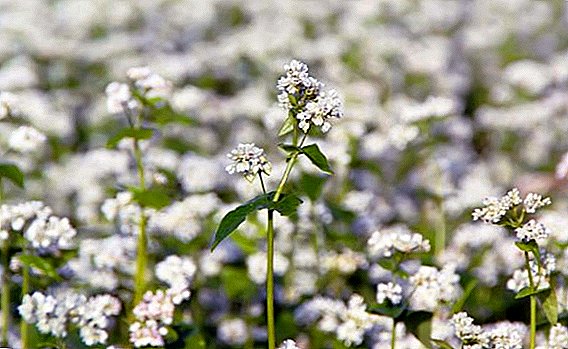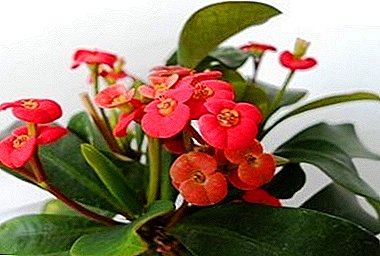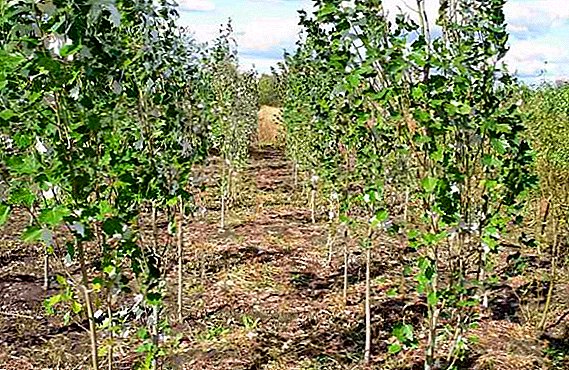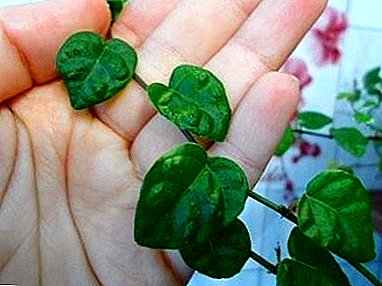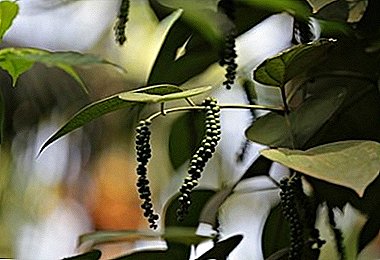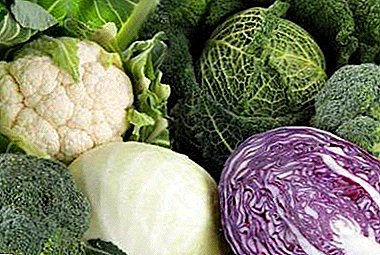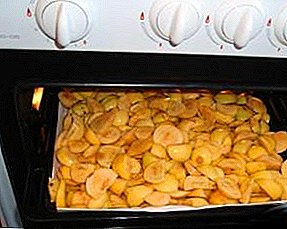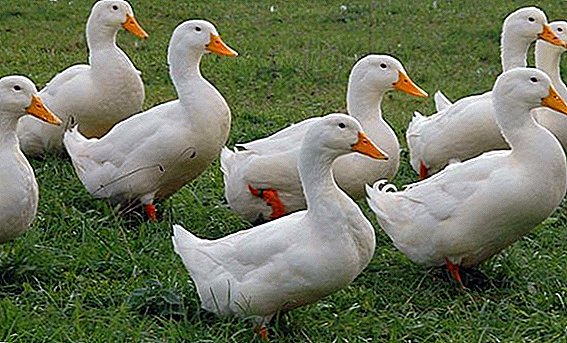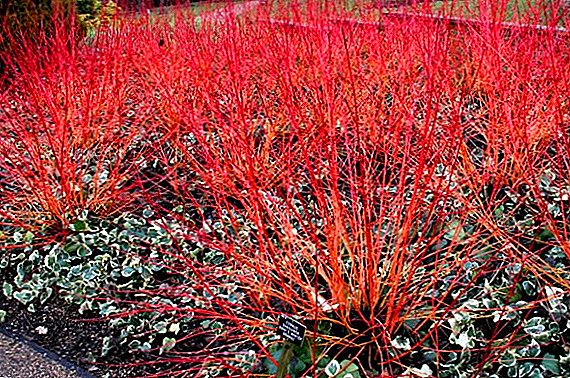 Red dören is one of the few deciduous ornamental plants that even look pretty pretty when the foliage is dropped. The impressive appearance of this shrub became the reason for its demand among landscape designers. About the peculiarities of its cultivation can be found in this material.
Red dören is one of the few deciduous ornamental plants that even look pretty pretty when the foliage is dropped. The impressive appearance of this shrub became the reason for its demand among landscape designers. About the peculiarities of its cultivation can be found in this material.
Description fuck red
Dören Red (Cornus sanguinea)also known as "svidina blood red", belongs to the genus Kizil (Córnus) and the family Kizilovye. It is quite common in Europe. In its natural state it can be found in the space from the south of Scandinavia to the north of the Balkans, as well as in the territory from the Baltic to the lower reaches of the Don. Prefers undergrowth of deciduous or mixed forests, as well as dry shores of water bodies.  This plant is a shrub with open branches that reaches 4 meters in height. Its leaves have an elliptical or ovoid shape, they are bright green on top, pale green on the bottom, and in autumn they turn wine-colored or blood-red. The young shoots are green, but over time they become purple or red-brown, they become brighter in autumn and spring.
This plant is a shrub with open branches that reaches 4 meters in height. Its leaves have an elliptical or ovoid shape, they are bright green on top, pale green on the bottom, and in autumn they turn wine-colored or blood-red. The young shoots are green, but over time they become purple or red-brown, they become brighter in autumn and spring.  The flowers are shit dull white with lanceolate petals.
The flowers are shit dull white with lanceolate petals.
Fruits are blue-black, spherical, with a diameter up to 8 mm, with a large stone. They inedible.  The life of this plant is 12-18 years.
The life of this plant is 12-18 years.
Did you know? Some species of the Cornel family are trees that can grow and bear fruit for about 300 years.
Planting a crap red
When planting this shrub should take into account some of its features - this will allow you to get the maximum visual effect of the plant in the design of your own garden. Let us consider these features in more detail.
Where to place
The described plant is recommended to be planted in the sunny part of the garden or in light shade. In principle, the tree feels good in a more dense shade, but at the same time it looks more modest: the shoots become too long, the foliage is thin, the color is less bright. Therefore, the best option is to disembark it on the sunny side.
A good option for landing trap will be a place along the fence.
In addition, it is desirable that the background for this bush should be something monotonous: a wall or, for example, thuja thickets. It should not be planted shrub in low wet areas. 
What should be the soil
Red soil is not fastidious to the soil, it grows practically everywhere, except for very acidic or very poor sandy soils. In any case, the soil should be drained. Best of all, the plant feels on well-fertilized soils. If the soil at the site of planting is not, then you can properly prepare the landing pits - more on this will be discussed below.
Learn more about the soil: basic properties and composition, fertility and acidity, fertilizers for different types of soil.
Landing process
Seedlings are planted in early spring or around mid-autumn, when frosts are still absent. Before planting the seedling is recommended to place the roots in a container with water at room temperature for 4-5 hours. Also required shorten shoots by 10-15 cm: too long shoots will slow down the rooting of the plant. If a sapling is purchased with an earthy lump on the roots, then it is not necessary to soak them in water - in this case, the planting is carried out together with the lump.
For planting, it is necessary to dig a hole in such a way that the roots of the seedling fit there and there is a place for the drainage layer. At the bottom of the landing pit need to pour drainage layer about 15-20 cm thick. This may be coarse sand, crushed stone or broken brick. When planting in the pit, humus and organic fertilizers are also introduced. After the pit falls asleep, the ground is slightly trampled and watered with plenty of water. The area around the seedling mulch sawdust or peat. 
Care of red buckthorn
This shrub is very unpretentious, but care for it does not hurt, because while the appearance of the plant is significantly improved: the crown becomes denser, shoots and leaves - brighter.
How to water
The plant does not need a special watering schedule, but it is watered abundantly when planted. Further watering is carried out as necessary, as a rule, in too dry summer. An indirect sign of such a need is the loss of leaves of turgor (leaves droop, begin to shrink).
Read also about the basics of growing white and variegated turf.
What fertilizer to choose
Fertilization has a positive effect on the appearance of the red turf, which is very important for ornamental shrubs. Usually it is fed with complex mineral fertilizers, which are applied in spring, after abundant watering. This may be "Nitrofoska", "Ammophos", "Nitroammofoska", etc. These fertilizers must be applied to the soil according to the instructions on the package. 
How to trim
This procedure is required to be carried out regularly, as without cutting the plant can quickly turn into an untidy dull bush. Usually, the first pruning is carried out for 3-4 years after planting. The procedure is carried out in spring: they cut off the old shoots at a height of 15-20 cm, as well as young, but poorly developing.
Important! Cut-off areas need to be treated with ashes or crushed activated carbon - such treatment will protect against diseases, as well as accelerate the healing of the cut.
Breed red yummy
There are a number of ways of breeding turf: seeds, cuttings, layering and dividing the bush. Let us consider in more detail each of these methods. 
Seeds
The best time for planting seeds - autumn, October. If the seeds are planted in the spring, they are preliminarily kept in the refrigerator for two months - this procedure is obligatory. Seeds are planted directly in open ground. In the garden beds, they make furrows 5 cm deep, spread the seeds on them and put them in addition. Place of landing shelter for the winter does not require.
In the autumn there are shoots, which subsequently thin out. Replant the plants in a permanent place after they reach 70-80 cm in height. This usually occurs 4-5 years after planting the seeds.
Important! Seeds can be purchased in specialized stores or collected from growing bushes. They are collected in the fall: the seed is freed from the external pulp and dried. Keep them in a cool place. Seeds remain viable for three years.
Cuttings
Reproduction by cuttings is very often practiced. Cuttings cut in June - for this choose young shoots. They are planted in greenhouses or greenhouses to a depth of 7-8 cm at an acute angle. A mixture of peat and sand is added to the planting hole. Planted cuttings are watered abundantly, and throughout their stay in the greenhouse they should also be regularly sprayed with water. The greenhouse should be protected from direct sunlight, periodically ventilated, the optimum temperature in it is + 23 ° C ... + 25 ° C.  In the autumn, when the cuttings form a root system, they are transplanted to a permanent place. For the first winter, seedlings need to be covered. To do this, you can use different covering materials, for example, lutrasil, spunbond or burlap.
In the autumn, when the cuttings form a root system, they are transplanted to a permanent place. For the first winter, seedlings need to be covered. To do this, you can use different covering materials, for example, lutrasil, spunbond or burlap.
Check out the collections of shrubs for the garden: berry bushes, ornamental, deciduous, evergreen, coniferous, blooming (with white flowers), for hedges.
Layering
For the reproduction of the shrub by layering side shoots are used, growing low from the ground. The procedure is carried out in the spring. For reproduction, a suitable shoot is pressed to the ground and fixed there with a clip. The place of contact with the soil is sprinkled with soil and mulched. Covering the layers for the winter is not required.  Separation of the cuttings from the parent bush is carried out in the next year, in spring or autumn: by this time he has a root system. Separated layers are transplanted to a permanent place.
Separation of the cuttings from the parent bush is carried out in the next year, in spring or autumn: by this time he has a root system. Separated layers are transplanted to a permanent place.
It is interesting to read about the beneficial properties and use of edible berries of dogwood, as well as preparation for the winter: drying and freezing, juice, jam, marmalade.
Dividing bush
For this method use overgrown bushes. The procedure is carried out in spring or autumn. A suitable bush is dug out, shake off the roots from the ground and divided in such a way that each separated part has a developed root system and full-fledged shoots. Root cutting is covered with ash. Next, the separated parts are planted in the soil in permanent places.
Diseases and pests
Red Durene is resistant to diseases. In some cases, young shoots may be sick. powdery mildewbut this rarely happens. To combat it, fungicides are used, for example, Kvadris, Topsin, Fundazol, etc. In addition, the plant may not look or even die if excessively wetted, but this problem is easily solved by selecting the planting site and organizing drainage.
Pests can threaten the plant. aphid, sawfly, larvae of yellow-orange fly. To combat them use insecticides, both specialized and broad-spectrum. These may be Karbofos, Biotlin, Tanrek, etc.
Did you know? According to a Christian legend, Christ was crucified on a cross made of cornel wood. After this event, dogwood turned into a shrub, and its flowers - in the likeness of the cross.
Video: review of the shrub Dören red
As can be seen from the above, the cultivation of red sugar is not difficult. Actually, you can never take care of planted shrubs, but to maintain its spectacular view, taking care of it is still extremely desirable, and besides, it is not at all complicated and does not require significant costs. So this plant, besides attractiveness from the point of view of landscape design, needs only minimal care.


